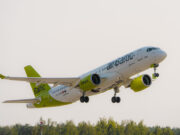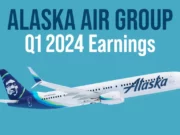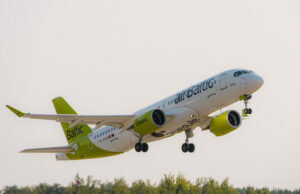
As I discussed in an earlier column titled, The Time is Now, airlines are hiring again! Almost all legacy, LCC, ULCCs and regionals have announced plans to resume hiring. Further, we have new entrants into the market with Breeze and Avelo. This isn’t even covering the rapidly changing AMCI and cargo markets. As in 2019, the outlook for pilots is getting hot.
When I was an active applicant, I had a lot of questions for my friends at the airlines. I receive a lot of those same questions now from those I mentor. Here, I will discuss some of the tips and tricks I’ve learned that will give you a solid foundation when applying and interviewing. Hopefully, these will get you started in the right direction!
Almost every airline application is going to require a résumé and flight hours. I highly recommend that before you ever apply to an airline, you get those two documents in order.
Flight hours and logbooks
Most, but not all airlines use AirlineApps. (UPS, Southwest, American and Allegiant come to mind as those that use different platforms.) I would recommend looking up any airline you are remotely interested in, finding out what numbers they care about (solo, Part 135, Part 121, “heavy”, PIC, SIC, etc.) and get those numbers. Then, create a routine. I chose to update my logbooks monthly, on the first Tuesday, and I recommend an interval no longer than that. Two weeks to a month is excellent. After you set the time frame, put it on your calendar and don’t skip it. Updating frequently allows you to present your latest numbers and also saves a lot of hassle. You do not want to apply with accurate numbers, get a call to interview months later and have to rush to update your books. You’ll want to spend that time focusing on your impending interview.
Résumés
When it comes to résumés, I would ask three to five close friends if you can see their résumés. Ideally, three of these friends will be airline pilots or in the industry in some other capacity, and another two will be outside the industry. Look at how their résumés are structured; fonts, font size, where the contact information is, the number of columns, etc. What sections do they have? What is the order of those sections? Take these notes, and using free templates, create a résumé that includes the best. Send it back to your friends to have them critique it. Take their suggestions and incorporate them. Once this is complete, whenever you update your flight times and logbooks, update your résumé. Also, be sure to save both a .pdf and a .docx file. The .docx will be edited in the future. The .pdf will be what you upload to application portals.
Dress for success
Buy a suit, tie and shoes now. You shouldn’t change in size too much in the next one to two years. If you do – well, that’s another discussion. But this is such a simple task that can be done now, leaving more important interview prep for closer to the actual day. I recommend grey or navy suits, with white dress shirts. Make sure the suit fits nicely. Since you are making the purchase well in advance, I would recommend using that time to have the suit tailored. For men, buy a tie that is not too flashy; solid colors or with only small, subtle patterns. There is a belief that certain colors cause people to feel a certain way. I wouldn’t read into that too much. The colors I most often see are solid blue, red or gold. Tie the tie when you buy it, hang it up and forget about it. It will be ready for your big day. You can wait for sales if you are starting this process early. Just don’t wait too long. You don’t want that task to interfere with your interview preparation.
Assuming you have the qualifications, you’ve completed the before-I-apply section and you’re ready to start applying.
Applications
Here is where the rubber meets the road, as they say. The applications for airlines are fairly complex, covering most of your life. Keep in mind that the same question can mean different things among the airlines. Airline interview coaches or airline interview prep companies will both provide an application review and interview prep. Some will also offer a résumé review. (Editor’s note: Affiliate to this publication, Aero Crew Solutions is just such a service.) Use all of these options, if possible. While these services can run into the hundreds of dollars, if you are applying to a major airline, the result can be a highly lucrative, multimillion-dollar career. Invest in yourself to make sure you are putting your best face forward. Also remember, for this stage, you’re going to be spending a lot of time on your application and résumé. Once you get the call, you’ll shift to the interview prep services.
Every time you update your résumé, update your application. An hour a day every two to four weeks is manageable. Keep yourself and your information accurate for recruiters.
Stay informed
Before you close that computer browser, set up news alerts. I used Google Alerts to send me updates whenever my targeted airlines were in the news. The thinking is that any question is fair game during an interview, and a juicy news story the day or weeks before may come up. Show the airline recruiters that you are following the industry and aware of the changes. Knowledge is power, and this is one nifty little tool to keep you in the know.
Networking
Once you complete the reviews, and your application is submitted, it is time to get out and start networking. Networking is a career-long process, not just a stage in the application process, but it deserves mention here. Try to attend every virtual event you can, and some in-person career fairs annually. These are excellent opportunities to meet recruiters, chief pilots and applicants for every airline. You can also learn much about the state of aviation and the direction of the industry. I recommend attending all free events and one or two of the large events held by organizations, such as Women in Aviation or Organization of Black Aerospace Professionals. Try to stay for the full schedule, not just one day. Attend the breakout sessions and after-hours events. Invite fellow pilots out, split the hotel room and work together to meet people. Once you connect, follow folks on social media sites like LinkedIn. This is a small industry, and you will see people reappear from all over the industry.
Reach out to friends at your targeted airlines. What is the hiring landscape like? What is the application and training process like? What did they wish they knew when they applied? Is there any advice they have? Current pilots at any airline are usually more than willing to explain everything about an airline to their friends. Use these resources to your advantage to learn all you can about an airline and its talent acquisition process. If you and your colleagues have flown or worked together, don’t be too shy to ask for a letter of recommendation. Many of us in the airlines have forgotten what it is like to apply. Most of us will answer a request for a letter of recommendation with an, “I’d love to! How do I do that?” Additionally, see if your friends know anyone who has recently interviewed. See if you can connect with them to learn what their experience was like. The more you can learn, the smoother the process will be.
Bonus tip: Many but not all, airlines require transcripts from the universities you attended. After you have completed the applications, acquire one or two copies of all transcripts in case you get two interviews scheduled close together. You don’t want to deal with this hassle when you are studying for the interview. Get it done now, even if it costs a few dollars. If you need more, you can always order more later. Do not open them! For a transcript to be “official” it must remain sealed until the recruiter opens it.
The call
One day you will receive an email or a phone call informing you that you’ve been selected and advanced in the process. The airline wants to interview you! Congratulations! When this happens, immediately schedule your résumé, application and interview prep with the service. These usually take one to two weeks to complete, and you’ll want to be fresh and sharp. Hone your skills handling TMAAT, SBT and personal quality questions. If the company you chose offers it, schedule multiple video, in-person or phone practice sessions. Understand the structure of the questions and the structure of a strong response. Practice, practice, practice.
Bonus tip: Spend time committing the company’s values, mission statement, history and the names of the top executives to memory. Being familiar with who the CEO is or how the company was founded could come in handy during the interview.
These are the tips and tricks I have learned over the years from friends and my own personal experience. Did I miss something? Do you have a tip to share? Please leave your recommendations and suggestions in the comments section or send to Feedback (info@aerocrewnews.com).























































Thank you for your solid advice!